Here is a free beginner’s guide on how to make beats and how to make music in general.
This guide is for new music producers, but even if you are a pro, you will still find helpful links on how to make better music. Making music has many aspects, from learning software to making the beat to mixing the audio to exporting audio for music artists.
Learning to make your own beats can be overwhelming, but this guide covers many of the basics to make it easier for you to learn. So, let’s get started!
- Music Equipment Basics
- Music Software Basics
- VST Instrument Plugins & Effects
- How to Make Your Own Beats
- Song Arrangements
- Advanced Video Tutorials
- Beginner Music Questions
- Start Making Music!
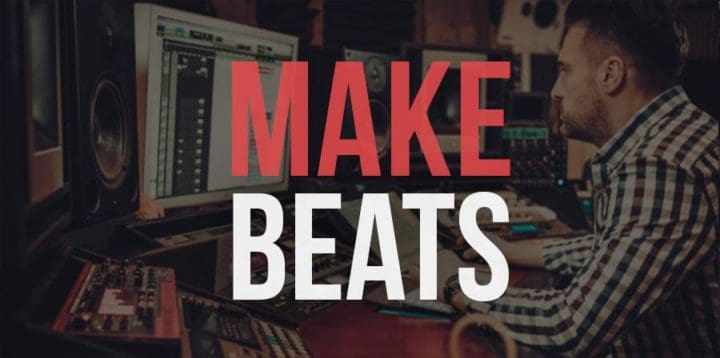
Related: 30 Best Websites to Make Beats Online
How to Make Beats
1. Music Equipment Basics
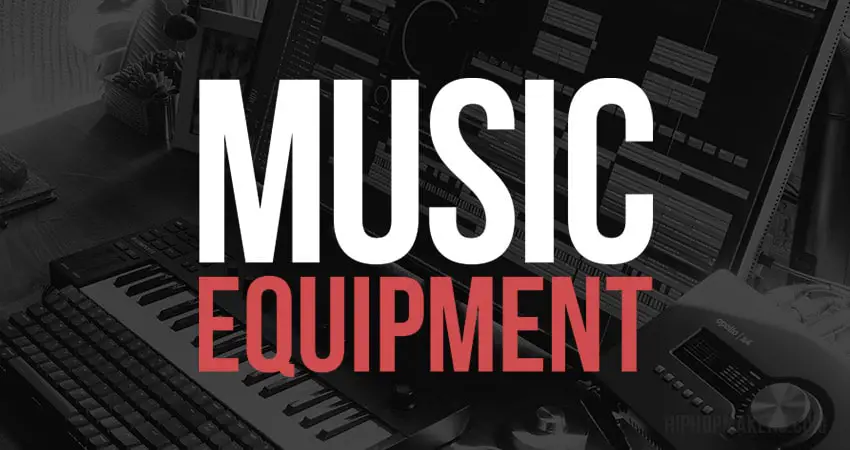
Your music equipment will be the foundation of your music-making process.
In the beginning, we all want to be like the big music producers we see online with a room full of music equipment, but you don’t need all that when you are getting started, and here is why:
- Music Equipment is Expensive
At first, limit your spending to basic equipment, and then buy more advanced gear when you earn money. - Time & Learning
The more equipment you buy, the more equipment you have to learn, and less time is spent on learning to make better music.
Remember this…
It’s not about the music equipment or software you are using, but about the person using the equipment.
Your ear for music, skills, and talent matters more than the equipment you are using.
Dr. Dre’s music equipment didn’t make him the big music producer he is today, but his ear for music and talent did. So don’t think you need a big studio to make good music.
Music Equipment Essentials
Here are the very basics of what you need to make music.
1.1 Laptop or Desktop Computer
A computer is a must-have to use any music software program.
Microsoft Windows computers are more popular for creating music because there is more software available for free.
However, Mac computers and popular music programs like Apple Logic and Garageband have continued to grow in popularity.
Most Popular Laptops
Last update on 2024-04-14 / Affiliate Disclaimer
1.2 Music Software

Music software is essential for recording and making music.
Later in the article, I will cover the top 3 most popular music programs.
1.3 MIDI Keyboard
You can connect a MIDI controller to your computer to play out chords, melodies, and your musical ideas.
Making music is much easier with a keyboard because you can just play out your ideas instead of clicking musical notes with a computer mouse.
Top Selling MIDI Keyboards
Last update on 2024-04-14 / Affiliate Disclaimer
1.4 Studio Headphones
Headphones will let you hear all the different elements when making music.
Top Selling Headphones
Last update on 2024-04-03 / Affiliate Disclaimer
1.5 Studio Monitors ( Optional )
Studio monitors are great for listening to your beats.
Top Selling Studio Monitors
Last update on 2024-04-01 / Affiliate Disclaimer
That is the basic equipment you need for creating beats.
If you have a limited budget, you can consider buying used music equipment from sites like Craigslist or Offerup.
Related: Music Studio Desks
2. Music Software
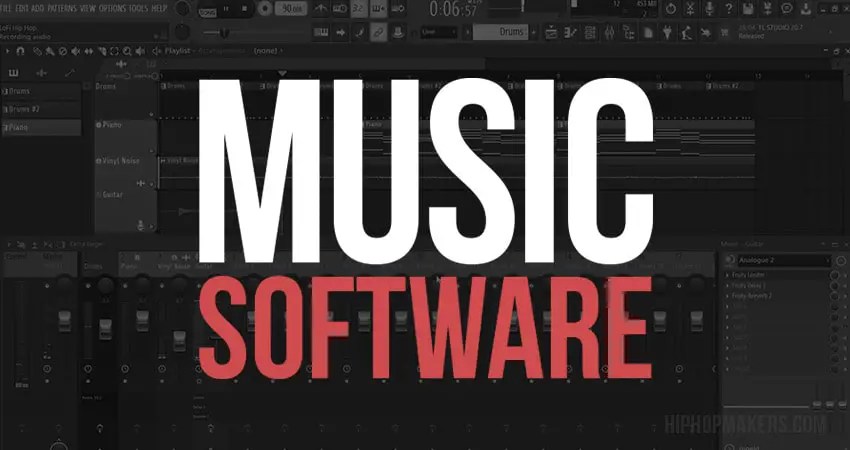
There are tons of music software programs available, but which one is the best for you? Watch the video below.
Music Software Overview
Top 3 Beat-Making Software Programs
#1. Image-Line FL Studio
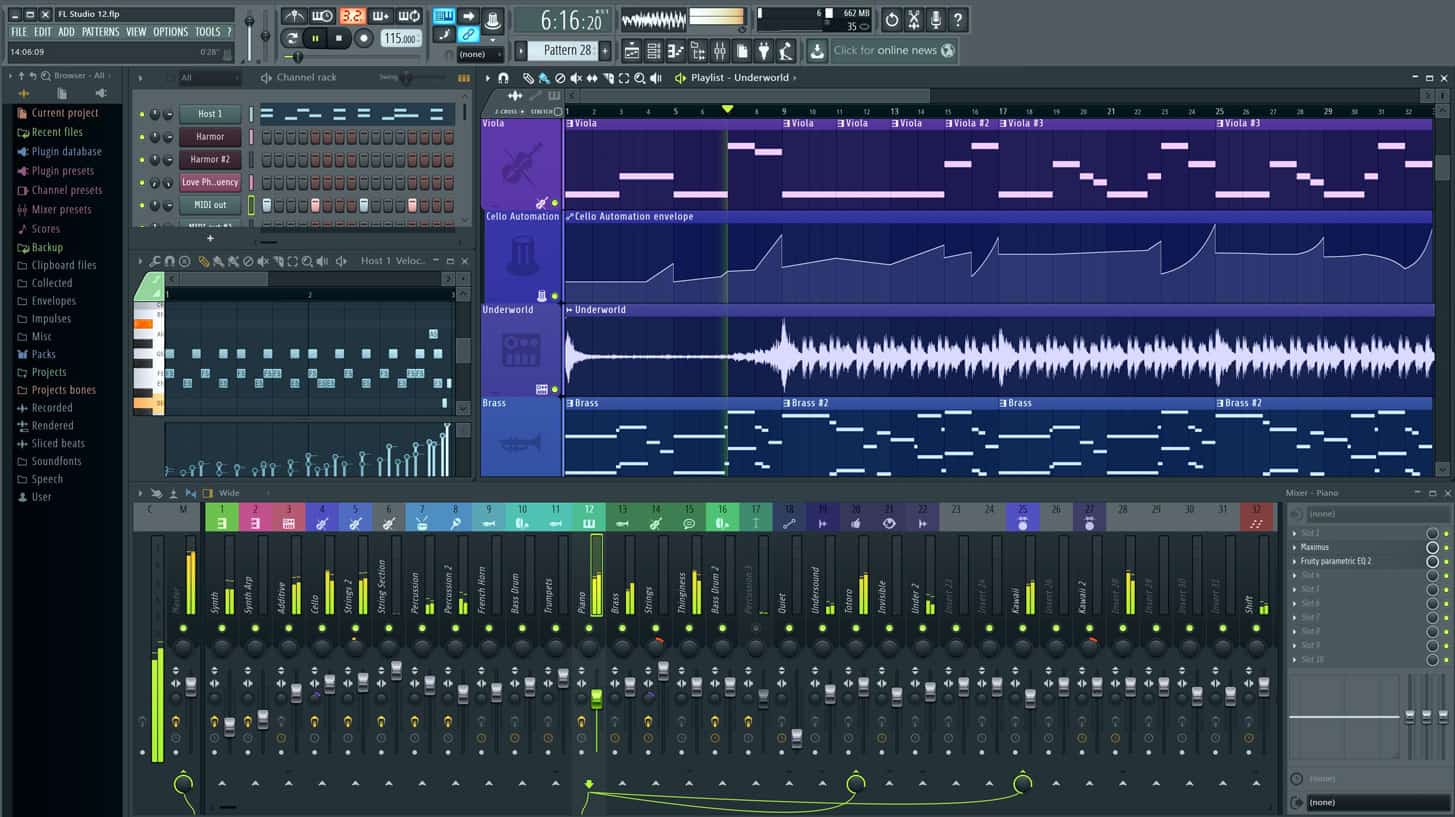
FL Studio (formerly named Fruity Loops ) is a digital audio workstation developed by Image-Line.
FL Studio features a graphical user interface based on a pattern-based music sequencer.
Why FL Studio is Popular:
- It’s easy to learn.
- Cheaper than many other programs.
- Supports VST plugins, samples, and other software programs.
- Making patterns and arrangements is easy.
- Offers tons of built-in instruments.
FL Studio Links:
#2. Propellerhead Reason
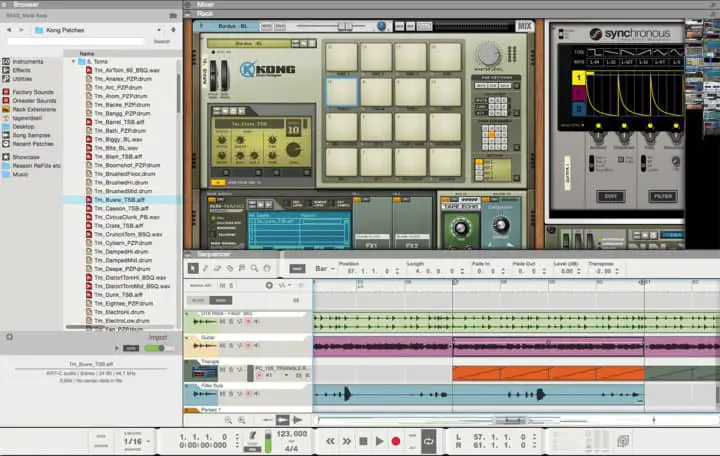
Propellerhead Reason is a digital audio workstation for creating and editing music and audio developed by Propellerhead Software.
It emulates a rack of hardware synthesizers, samplers, signal processors, sequencers, and mixers.
Why Reason is popular:
- Includes tons of instruments: Synthesizers, Samplers, Drum Machines, and Effects.
- Cool interface, racks, and mixer.
- ReWire allows you to use Reason in other popular music software programs.
- Add additional sounds called Refills.
Reason Links
#3. Apple Logic
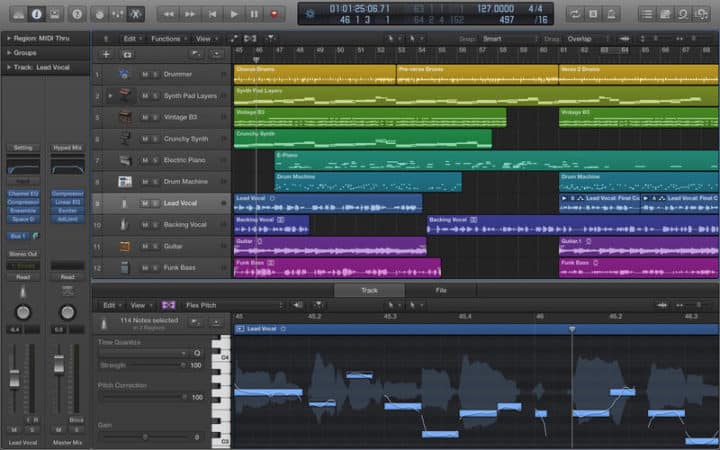
Logic Pro is a digital audio workstation and MIDI sequencer software application for the Mac OS X platform.
Why Logic is popular:
- Nice-looking interface.
- The virtual instruments and session drummer work well and sound incredible.
- Mixing, effects, and automation
- Enhanced Piano Roll Editor.
You should research the programs above and see what works best for your needs.
What is the most popular music software?
FL Studio was voted the most popular music software in the poll we ran. So you may want to look into that program if you are a beginner.

Other Popular Music Programs are:
- Ableton Live
- Steinberg Cubase
- Pro Tools
- Reaper
- Garageband
- Sony Acid
Related: 15 Best Online Music Producer Courses
3. VST Instrument Plugins & Audio Effects
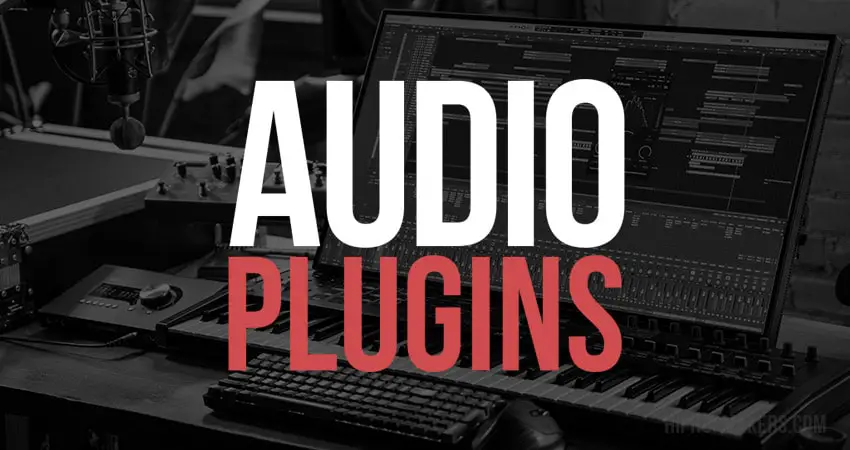
Another software you will need to familiarize yourself with is VST Instruments and VST plugins. “VST” Stands for Virtual Studio Technology, and these are plugins or add-ons for instrument sounds or effects that you can use in different music programs.
A VST Instrument can be a piano, synthesizer, organ, or guitar.
A VST Effect can be autotune, delay, chorus, or reverb.
VST plugins can be helpful add-ons for any music program you are using to give you additional sounds and effects.
Most DAWS offer great stock plugins and sometimes that’s all you will need. However, if you want to dive deeper into this world, check out some of our most popular free VST plugin articles:
4. How to Make Your Own Beats
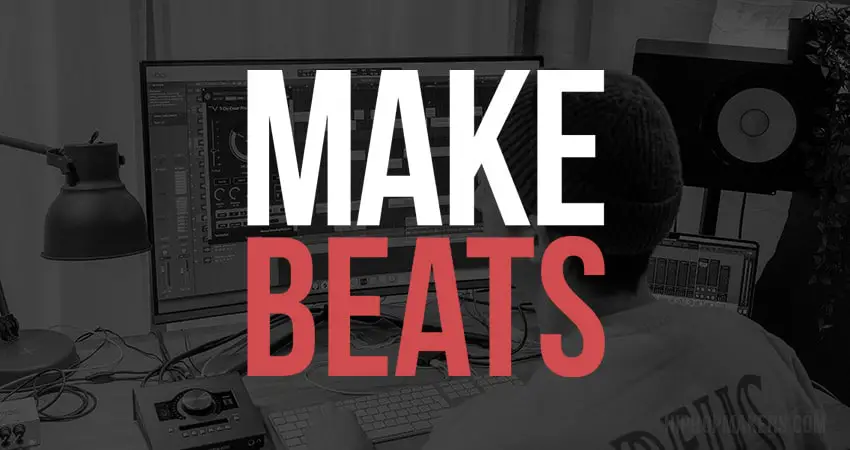
Making beats may actually be easier than you think if you have an ear for music. Beats are essentially loops that are rearranged and repeated.
Beats can be simple, or beats can be complex.
It’s all about giving the music artist a good foundation to inspire their creative juices and create a great song.
Basic Beat Elements
1. Drums – Songs usually consist of a kick drum, snare drum, clap, hi-hats or shakers, cymbals, and other drum sounds.
2. Melodies – The melodies are the instruments that are played over the drums. The instrument can be a piano, synth, bass, strings, live instruments, and more.
3. Samples – Many hip-hop beats feature samples that have been chopped and reorganized to fit a drum track.
How to Make a Beat
Here is an example of how to make a beat. Although the drum beat below is made in FL Studio, the same process can be applied to other music software programs and hardware. Lay out your drums, add instruments, and arrange your beat into a full song.
How to Make a Beat in Reason
Here is an example of how to make a beat. Even though the beat below is made in Propellerhead Reason, the same thought process can be applied to other music programs and hardware. Lay out your drums, add instruments, and arrange your beat into a full song.
Please Note: The beat below isn’t great. Just try to learn from the process.
How to Create Better Intros, Choruses, and Verses
Here is a process I like to use to create different-sounding parts of a beat. The tutorial is done in Reason, but it can be done in other music software as well.
Beat-Making Guides
The examples below are made with different music equipment and software, but the process is very much the same for all the different music genres.
- How to Make Hip Hop Beats
- How to Make R&B Beats
- How to Make Sampled Beats
- How to Make Pop Beats
- How to Make Trap Beats
- How to Make Dubstep Music
- How to Make Electronic Music
- How to Make Lo-Fi Beats
Beat Making Inspiration
- 10 Year Old Girl on the MPC
- Hit-Boy Makes Beyonce’s “Bow Down” in FL Studio
- J. Cole Explains Making “Power Trip”
- Jaisu Beat Tape – Sampled Beats on the MPC
- Gnus Makes a Beat in FL Studio
- Jon Bellion Making of Pre-Occupied
Beat Making Tips
Here is a collection of beat-making tips to use when making your own beats.
- Focus on mastering the one program you choose to use. Don’t try to learn everything at once.
- Study your favorite record producers. Try to recreate your favorite beats to understand how beats are made.
- Collaborate with others.
- Beats should usually stay under 3 1/2 minutes.
- Import MIDI. If you don’t know how to play the keyboard well, try importing MIDI files and editing the notes in your music software.
- When you need inspiration, look at beat-making videos.
Music Tempo Guide
Here are a few of the suggested tempos for different music genres.
- Hip Hop: 76 to 95 BPM
- R&B: 72 to 110 BPM
- Dance: 112 to 145 BPM
- Dubstep: 138 to 145 BPM
- Rock: 72 to 95 BPM
- Trap: 130 to 140 BPM
- Techno: 220 to 125 BPM
Beat Making Helpful Links
- 32 Music Production Tips
- Music Production Poll Results ( Infographic )
- 10 Tips to Make Your Own Beats
- 10 Newbie Commandments for Music Producers
Other Music Topics
- How to Make a Sampled Beat in FL Studio
- Piano Tips for Beat Makers
- Bassline Tips for Sampled Beats Part 1 & Part 2
- How to Create Acapellas
- Remix Songs
Free Drum Kits & Music Samples
Below, we have put together some of our best free resources for you to download and add to your music-making collection.
Free Drum Samples & Drum Kits
- Free Drum Break Samples
- Free Loops
- Free Drum Samples
- Free Hip Hop Drum Kits
- Free Boom Bap Drum Kits
- Drum Sample Packs
Popular Free Sample Packs
5. Song Arrangements
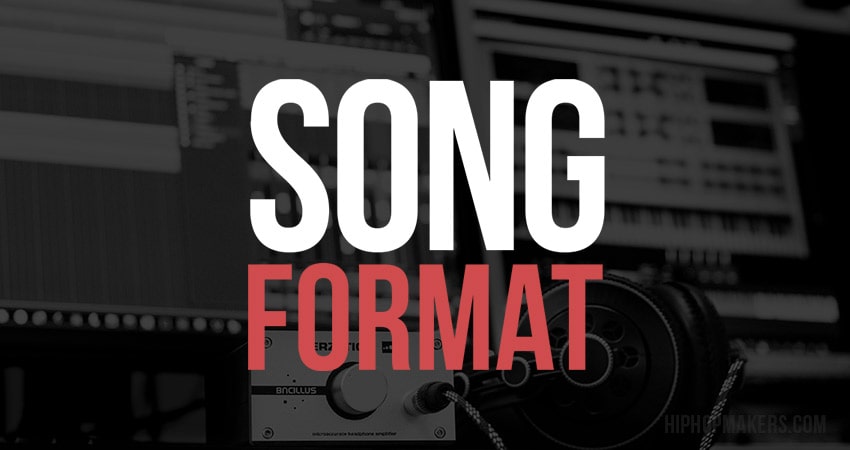
Once you understand how to put together a beat, you need to understand song structures. Different music genres are laid out differently, and song tempo and length may vary.
Common Song Sections
Intro – Usually has fewer elements and builds up to the verse or hook.
Verse – Usually a simpler version of the beat, allowing room for vocals. Usually 16 bars.
Hook – Usually has the most elements in a song and repeats a chorus. Usually 8 bars.
Bridge – This usually appears before the last verse. Usually appears in R&B and Pop songs. Usually, 8 bars.
Outro – Usually fades the song out.
Solo – This is a piece or a section of a piece played or sung by a single performer.
Common Song Structures
Intro – Verse – Hook – Verse – Hook – Verse – Hook – Outro
or
Intro – Hook– Verse – Hook– Verse – Hook – Verse – Hook – Outro
R&B Songs
Intro – Verse – Hook – Verse – Hook – Bridge – Hook – Hook – Outro
Rock Songs
Intro – Verse – Hook – Verse – Hook – Solo – Hook – Hook – Outro
The examples above are just examples. You should study your favorite songs to see how they are structured. You can also search Genius.com for song lyrics and see the order of song lyrics.
Helpful Links on Song Structure
- The Formula Behind Every Perfect Pop Song
- How to Produce Music – Form & Arrangement
- How to Rap: Song Structure ( Understanding Bars )
- Why We Love Repetition
- Beats, Bars, & Phrases ( How to Count Music )
6. Advanced Video Tutorials
Here are a couple of videos with more details on how to make music.
How to Start Producing Music
Additional Videos
Beat Making Articles
- 10 “Newbie” Commandments
- Music Production Poll Results
- Why We Love Repetition in Music
- 7 Things Every Music Producer Should Have
- 20 Popular Music Producers Who Use FL Studio
- Should You Follow Music Trends?
- 10 Tips to Make Your Own Beats
- 5 Reasons to Work for Free ( Newbie Tips )
- 10 Home Music Production Tips
- Should You Stop Making Music?
- How to Be a Music Producer
Collaborate With Other Music Creators
In your journey through music production, you will most likely want to collaborate with another producer, singer, or musician sometime. This is a great opportunity to learn new things and put your teamwork skills into practice.
When working with another producer, be sure to have open communication about what’s the goal of the project before hitting the studio.
If you’re working with a singer or musician, it’s great to establish some guidelines for the performer to make sure he or she is totally comfortable. Take some time to review things such as lyrics and melodies.
Related: Music Collaboration Tips
7. Beginner Music Questions
Do I Need to Master My Beats?
No, songs are usually mastered when they are completed with vocals. But you should mix your beat so it sounds good on the listener’s speakers.
I don’t have money to buy music equipment, what do I do?
If you have a computer, you can start making music with free music software. You can even download free trials for paid software to start learning the programs. I suggest you start saving up for a MIDI keyboard. You can get a USB MIDI keyboard for as low as $50.
FL Studio ( Fruity Edition ) may be the cheapest paid music software option. With a computer, MIDI keyboard, headphones, and music software, you are pretty much set with being able to make music.
Which is better, Hardware or Software?
They are both equally good. It’s all about personal preference. You can make good music with software only or with hardware as well.
8. Start Making Your Own Beats
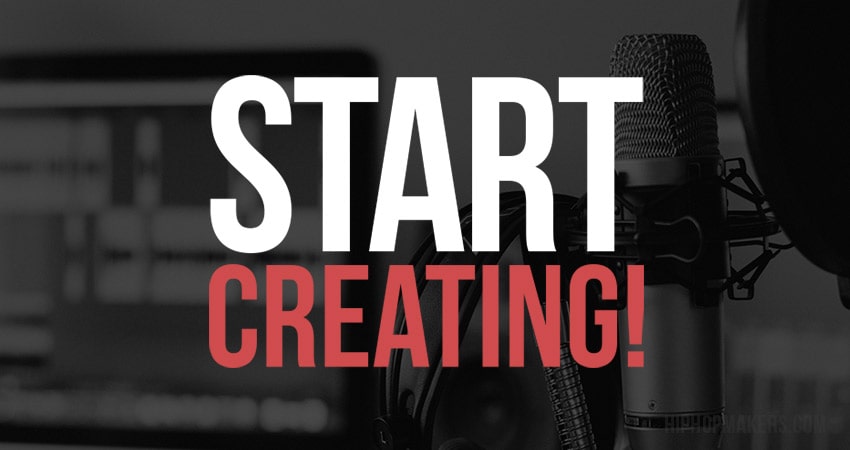
There are a lot of different aspects involved with making music.
Here are my top 3 suggestions:
1. Make Lots of Music!
Skills are built through repetition. When you do something multiple times, you get better and grow, and it becomes easier.
2. Work with Music Artists
There is nothing like getting hands-on experience. You can make beats forever by yourself, but there is an end goal, which is to see songs made with your beats.
Working with music artists will result in requests for instruments, song rearrangements, and different types of moods and feelings created by your beats.
These experiences will help you grow to see what music artists are thinking of and how to meet their needs to make good music.
3. Be a Self-Learner With Music Production
Because of the internet, you can learn almost anything online. If there are things you want to know or learn, do a Google search or look on YouTube.
If you want to learn faster from skilled music creators, take an online music course.
Either way, there is so much information available online that there is no excuse not to learn and become more skilled.
Making beats is a music production journey that begins with your own musical idea. To create your own instrumentals, you need a basic understanding of the essential tools, including digital audio workstations, a MIDI controller, and virtual instruments.
By playing virtual instruments and using midi notes, you can create drum patterns and drum fills that form the foundation of your pop, dance, or hip-hop beats. As you start building your first beat, remember to keep in mind the other elements, such as a bass line and chord progression, to achieve a good balance.
To make your beats sound good, you can use sound design techniques and incorporate different sounds and extra sounds. With everything you need, including software instruments, drum kits, and an audio interface, you can record music and create individual tracks that make up the entire beat.
The beat-making process is creative and requires experimentation with different sounds and ways of making beats.
At the mixing stage, you can achieve a professional sound by mastering the final track and ensuring the overall sound is just right.
By following simple steps and building simple beats, you can learn how to make beats and start making songs in no time.
Whether you’re making beats for yourself or someone else’s song, the beat-making journey is a fun and rewarding experience that can take you from a beginner to an expert in audio production.
If you have input on this article or feel the article is missing something, please share it in the comments section.
Next, check out our beginner’s guide on how to sell beats to make money from your beats.
Related: Free Beat Making Software Programs














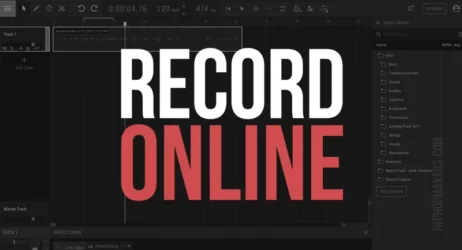
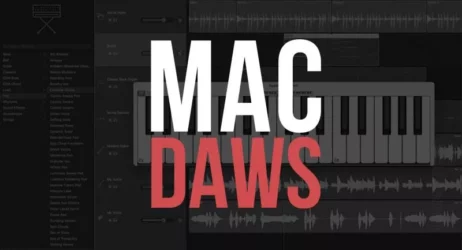


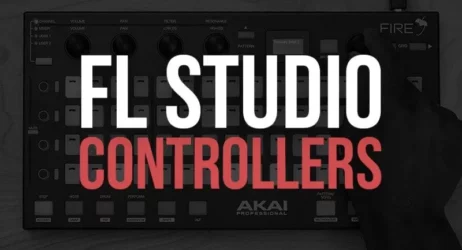
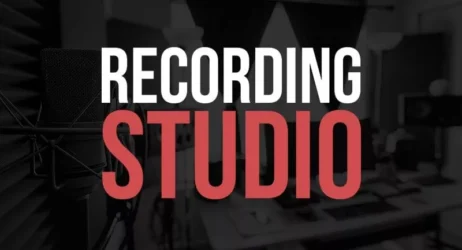
I like to work pretty exclusively in the daytime, preferably around noon. I spend however long it takes going through samples, vinyl, mp3, off the internet (it doesn’t matter where you get your sounds) than I load up some drums, either a break than take drums, eq & compress, or ill mess with some of my kits & mix & match sh*t, I load the sample into the NNXT, find my chops, than some alchemical process occurs in my brain & I black out for what feels like seconds but usually is like 2 or 3 hours later. Than I export into itunes and decide what I will do with the beat.
Out of inspiration today plus im feeling bad and sad for no reason, any ideas that can help me put out some beat?
i like watching youtube videos of the process of other producers like black milk and others then i’m inspired. i always start off with my drums. i can spend like 30 mins just tweaking my drums. then comes the bass, something different but hums well. after that i’m find either a sample or some sounds in my library to put over the drums and bass. then i mix it all down. then i’ll master the entire track. i do everything in Reason 5, can’t wait to get Reason 6.
melody first and the rest just falls in place. drums come last because my melody emotion sets the tempo.
I tend to switch it up a lot but once I’m motivated I like to find good kicks & snare’s to start my 8 bars with then I build with keys but what is most important is the feeling over anything cuz I use software and hardware…
I just start by letting my mind wander. Then i just record what comes naturally. Many say that starting a song with drums is amateur, though professionals like Battle Cat do that all the time. I believe what comes naturally will be your process. That means your process may change every time you sit down to start making your music.
I normally start off by watching youtube videos first too, one I’ve been watching lately is new york outlaw really recommend you guys check him out. Then after that, I miss melodies and then drums. My problem is I never finish a beat I only leave it for 4 bars, so I end up making about 3 or more a session and then I show my boys, and if they like it ill set the beat up, and that good sh*t.
@Shaggymusik Man that is true fam. The more the process changes the more creative you become. My process changes from week ta week depending on the mood
It varies. I might start with the drums or keys or a sample. I might get inspiration for a song I listened to or just want to use portions of a song to create a new one. I might get an idea from a friend to try something. I might hear a riff or a beat from a song I’m working on for my church and decide to apply that to something I’m working on. I use a variety of tools, but mainly stick to ProTools, Garageband, Yamaha Motif (7 and rack) and a bunch of iPhone apps (including the Groovemaker suite, iDrum suite, NanoStudio, Beatmaker, Alchemy, etc.)…
well, first thing i do is check the youtube for some hot samples. After i find the sample, im downloading it on my HDD, listening it once again, convert to .wav format, opet the recycle&sample. Then im slice the parts that i want to play.Im playing that part, until i configure the melody.. Starting my Reason 5, creating Dr.Rex, opening the sample, and put it on the template.. after that i create a drum line and bass. And the finish is the mix, i spend a lot of time in the mix,’cause i want that my beats have a smooth production!